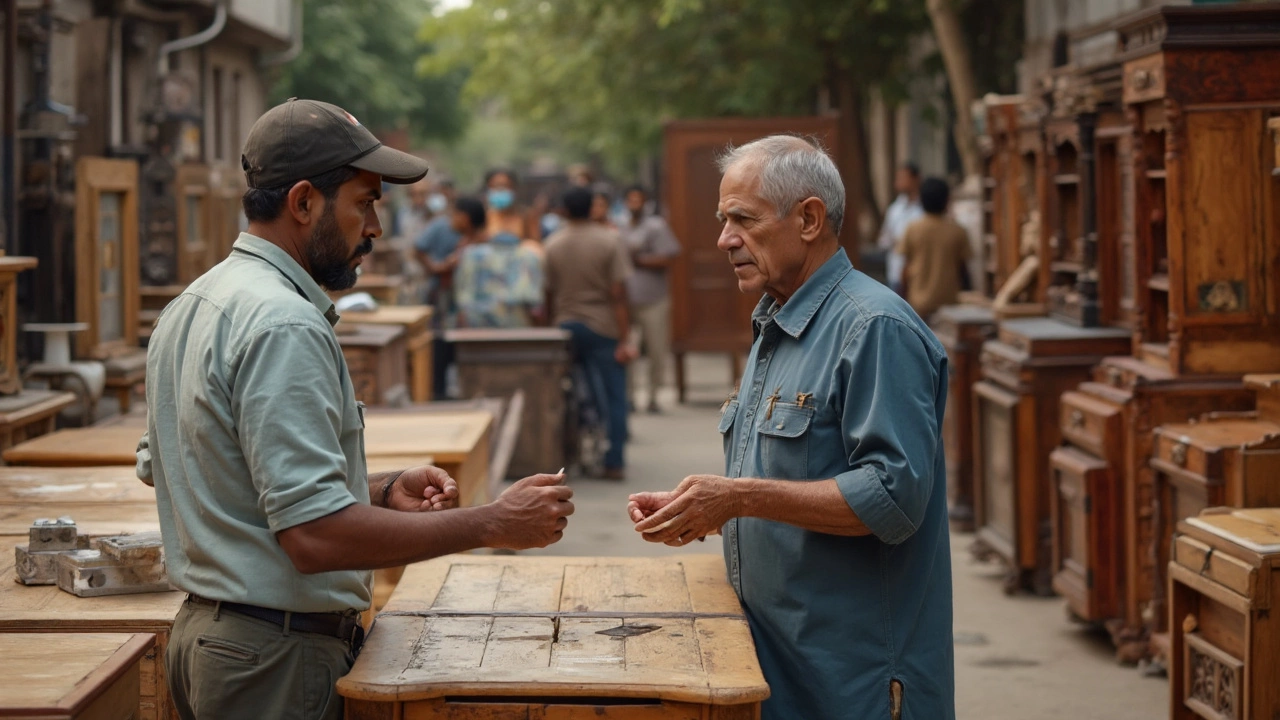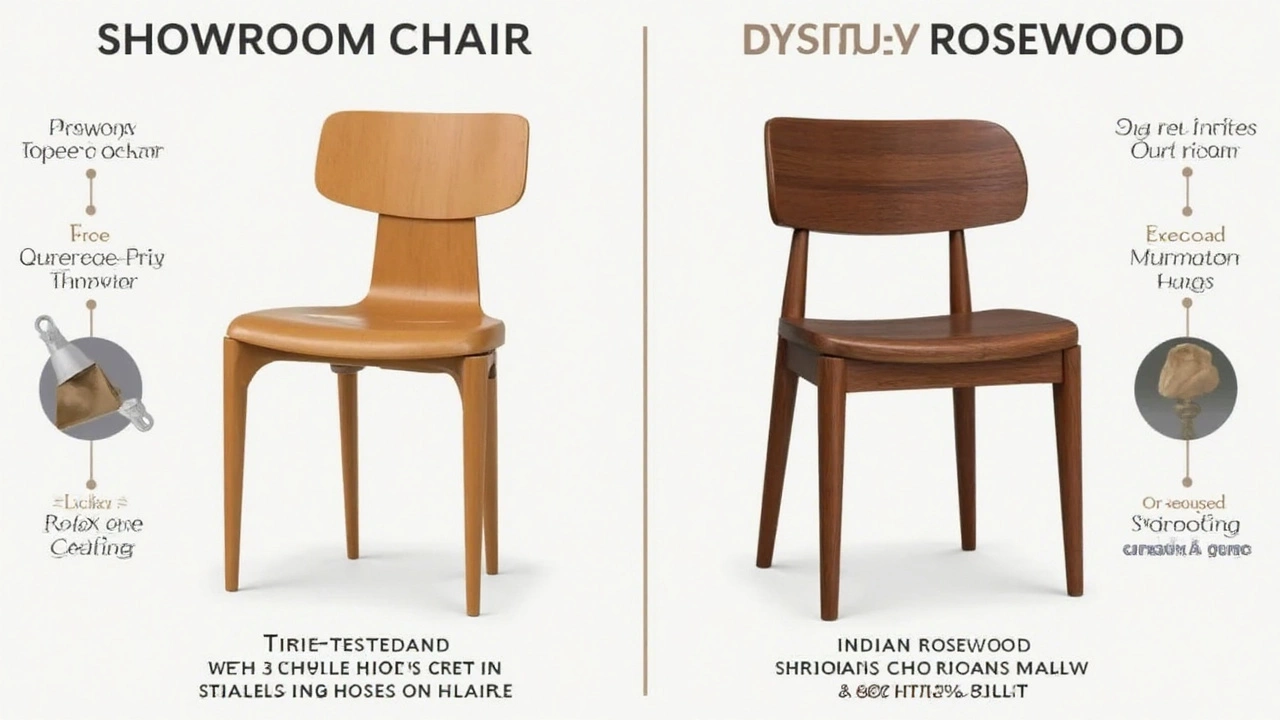Most people only realize how important tough furniture is after their first couch sags or a dresser falls apart. Before you shell out for something new, it's worth asking: what brands are actually built to last?
Quality furniture isn't just about price or looks. It's about solid construction, smart design, and materials that hold up to years of everyday use. Ever noticed how some old pieces from your grandparents look brand new, but a bargain find from five years ago is already toast? That's not luck—it's all about how (and where) it's made.
If your goal is to stop replacing your sofa every few years, knowing what to look for—and which brands have a real reputation for durability—can save you both money and frustration. Let's dig into what really separates the long haulers from the landfill candidates.
- What Makes Furniture Last?
- The Standout Brands That Outlive Trends
- How to Judge Furniture Durability
- Real User Experiences: Truths From Long-Time Owners
- Buying For Longevity: Insider Tips
What Makes Furniture Last?
If you want longest lasting furniture, it comes down to a few big ingredients: materials, construction, and how it’s put through its paces at home. Let’s zoom in on what matters when you want a sofa, table, or chair built for the long haul.
First up: wood. Solid hardwoods like oak, maple, and cherry crush it on durability compared to pressed wood or particle board. Furniture made from cheap stuff (think: MDF, particleboard) just can't take hits or heavy use—scratches, warping, or flat-out crumbling are on the cards. Look for real wood joints, not just glue and staples. If you see words like “dovetail” or “mortise and tenon” in the product details, you’re on the right track.
- Frame construction: For sofas and chairs, kiln-dried hardwood frames are the gold standard. They barely warp or crack over years.
- Cushions: High-density foam (at least 1.8 lbs/cubic foot) holds up, while cheap foam sags fast. Down-blend cushions are comfy, but need fluffing.
- Joints & fasteners: Screws and wooden dowels beat glue alone for holding things together long-term.
- Finish: A good finish resists scratches and water damage. If a finish rubs off fast, so will the furniture’s looks.
There's real proof in the numbers. Take a look at average lifespans for common furniture types, assuming you actually use them day-to-day:
| Furniture Type | Average Lifespan (Years) |
|---|---|
| Sofas (solid hardwood frame) | 15-20 |
| Coffee Tables (solid wood) | 20-30 |
| Bookshelves (solid wood) | 20-25 |
| Dining Tables (engineered wood) | 5-10 |
| Bed Frames (metal/solid wood) | 15-25 |
Remember, even pricey furniture can disappoint if it cuts corners on these basics. Skip the fancy labels for a minute and peek under the hood—what it’s made of, how it’s joined, and how thick the materials actually are. This is what decides if a piece will survive a move (or a few restless kids) or end up on the curb sooner than you’d like.
The Standout Brands That Outlive Trends
Some furniture brands just have a different reputation—they’re the ones people pass down to their kids, not toss at the curb after graduation. If you want to avoid buying the same items over and over, here are some names worth learning.
Stickley is one brand that comes up in almost every serious conversation about longest lasting furniture. They’ve been making solid wood furniture in the U.S. since 1900. Their secret? Handcrafted joinery and real hardwood, not particle board or shortcuts. You can easily spot Stickley pieces from the 1920s that still look sharp today, and they even hold their value on the secondhand market.
Another heavyweight is Herman Miller. Famous for their ergonomic office chairs (hello, Aeron), Herman Miller’s stuff isn’t just for looks—it’s made to survive years of daily use. They still offer replacement parts and repair services for models from decades ago. It’s one of the rare brands whose used products often sell for almost as much as new.
Then there’s Ethan Allen. You’ll spot their signature styles in homes everywhere, but their real strength is consistency. They use kiln-dried hardwood, and their sofas and beds often last well beyond 15 years with normal use. They’re not flashy, but when you want something classic and sturdy, they’re a safe bet.
Don’t overlook La-Z-Boy either. That name’s practically a punchline for recliners, but their build quality is no joke. Some families still have La-Z-Boy chairs from the 1980s in regular use. The trick here is their all-steel mechanism and solid frame construction—stuff that’s rare in value brands.
Here’s a look at how a few of these brands stack up, based on warranty and typical product lifespan:
| Brand | Founded | Main Products | Typical Lifespan | Warranty Offered |
|---|---|---|---|---|
| Stickley | 1900 | Solid wood furniture | 25+ years | Lifelong warranty on some pieces |
| Herman Miller | 1905 | Office furniture | 20+ years | Up to 12 years |
| Ethan Allen | 1932 | Home furniture | 15-20 years | Varies by product, up to lifetime |
| La-Z-Boy | 1927 | Recliners, sofas | 15-20 years | Limited lifetime warranty |
Want more lasting options? Brands like American Leather, Stressless (Ekornes), and even vintage Danish makers (like Hans Wegner) have cult followings for a reason. They keep it simple: sturdy frames, top-notch materials, and real attention to detail.
Looking up local reviews or secondhand listings can clue you in fast. If a brand’s furniture is still looking good after 10-20 years in someone else’s home, that speaks volumes about its staying power.

How to Judge Furniture Durability
Walking into a furniture store, shiny finishes can trick you. But durability is all about what’s under the surface. You want to spot what will really go the distance—because even high prices don’t guarantee tough furniture.
The first thing to check is the frame. For sofas and chairs, kiln-dried hardwood like oak, ash, or maple is the gold standard. Avoid softwoods like pine, which dent and warp way faster. Wiggle the piece—solid ones don’t rock or creak.
Joints matter even more. Look for terms like mortise-and-tenon or dovetail construction. These are the methods old-school craftsmen used for centuries. If all you see is staples or plastic brackets, walk away.
Cushions tell you a ton. High-resilience (HR) foam stays firm much longer than cheap, soft foam. Cushions that feel heavy and bounce back after pressing show you’ll get more out of your years.
When it comes to case goods—tables, dressers, shelves—solid wood beats particleboard or MDF every time. Veneer over real wood is fine if that base wood is quality. Check drawers: full-extension metal glides and dovetail joints last way longer than glued drawer faces.
"Solid wood frames and proper joinery matter way more than a fashion-forward fabric or a fancy finish," says Ron Barth, co-founder of Resource Furniture, in a 2023 trade interview.
Don’t fall for confusing labels. "Solid wood" is not the same as "all wood"—watch out for sneaky marketing.
- Lift up a piece—quality furniture is heavier because of solid materials.
- Open doors and drawers. Do they move smoothly? Flimsy sliders and wobbly doors spell trouble.
- Look underneath. A dust cover, clean finish, and fitted hardware are signs that makers cared about every detail.
| Feature | Best Choice | Red Flag |
|---|---|---|
| Frame Material | Kiln-dried hardwood | Pine, MDF, particleboard |
| Joints | Mortise-and-tenon or dovetail | Staples, glue, plastic brackets |
| Cushion Filling | High-resilience foam | Low-density foam |
| Drawers/Doors | Metal glides, solid hardware | Wooden runners, loose screws |
Here’s a fast rule: if you see cheap hardware, staples, or lots of glue, don’t expect it to last. Whenever possible, go with a trusted brand known for longest lasting furniture and craftsmanship—your future self will thank you.
Real User Experiences: Truths From Long-Time Owners
Some things you just can’t learn from a showroom floor—like how a sofa holds up to actual kids (and their sticky fingers), or how a dresser handles the weight of years’ worth of socks. To figure out which pieces actually last, nothing beats hearing from people who’ve lived with them for decades.
A lot of the buzz online points to classic names like Stickley, Ethan Allen, and Herman Miller. Folks on review sites and forums regularly call out their old Stickley mission chairs or Ethan Allen bedroom sets that still look sharp after 15 or even 30 years. You’ll spot countless stories where a Herman Miller Aeron office chair, bought in the early 2000s, is still rolling strong today. This kind of stuff doesn’t happen by accident—it’s all about that above-average build quality and strict quality control.
People who bought furniture from mid-century brands like Knoll or Drexel Heritage in the ‘70s or ‘80s say those pieces are basically family heirlooms now. There’s a huge number of posts from folks who got hand-me-downs from parents or grandparents, who bought solid wood furniture made in the USA. The takeaway is simple: heavier, solid-wood pieces tend to outlast lighter, particleboard or MDF stuff. Couches with real hardwood frames survive moves and enthusiastic plopping way longer than metal or plywood builds.
Check out these real user comments and reported lifespans:
| Brand | Furniture Type | Reported Lifespan (Years) | User Comment |
|---|---|---|---|
| Stickley | Mission Chair | 25+ | "Handed down from my dad. Still feels solid as a rock." |
| Herman Miller | Aeron Chair | 20+ | "Bought in 2002. Mesh hasn’t sagged a bit." |
| Ethan Allen | Bedroom Set | 15-30 | "Survived four moves. Drawers still glide like new." |
| Knoll | Dining Table | 30+ | "Inherited from parents. Has hosted every family holiday." |
Want to make sure your next buy is a future hand-me-down? Real users suggest this quick checklist:
- Test the weight. Heavier usually means solid wood, not hollow parts.
- Check joints—dovetail drawers and wooden pegs mean more durability than screws and glue.
- Open and close moving parts. Good drawers and doors don’t stick or wiggle.
- Read reviews, but look for updates after a year or more of use, not just first impressions.
When choosing longest lasting furniture, trust real stories over slick showroom displays. The brands that keep popping up in family stories are the ones worth your money.

Buying For Longevity: Insider Tips
Shopping for longest lasting furniture? Here's what the pros look for every time they buy. Forget chasing trends—instead, focus on these proven tips that make your next buy a keeper, not a regret.
- Check the materials: Solid wood (like oak, maple, or cherry) can take a beating and still look good decades later. Particle board or cheap laminate might be fine for a quick fix, but don’t expect it to hold up after a few moves or a growing family. Real leather and heavy-duty fabrics also outlast thin synthetics or printed veneers.
- Ask about joinery: If you see dowels, dovetails, mortise-and-tenon, or screws holding a piece together, that’s a good sign. If it’s all just glue and staples, skip it—those are quick-fail shortcuts.
- Test it in the store: Open drawers fully, plop hard on the sofa, and lean into chair arms. Good furniture won’t wobble, creak, or feel flimsy. If something rattles now, it’ll only get worse at home.
- Choose well-known, time-tested brands: Stores love to push their house lines, but do a quick search for independent reviews. Stick with brands that have been around for decades and are easy to repair or get parts for—like Stickley, Ethan Allen, La-Z-Boy, Herman Miller, or Knoll for office setups. Heritage brands stick around for a reason.
- Look for warranty or repair options: Lifelong or 10+ year warranties suggest the company expects their stuff to last. Don’t sleep on brands offering in-house repair services; it shows they stand behind their work long-term.
Want to put some numbers behind it? Check out how different materials and brands stack up for average lifespan:
| Material/Brand | Average Lifespan (Years) |
|---|---|
| Solid Oak Furniture | 25-50 |
| Stickley (Solid Wood) | 30-80 |
| Herman Miller (Office Chairs) | 15-30 |
| Mid-tier Store Brands | 7-12 |
| Particle Board Pieces | 3-7 |
Final tip? Don’t rush. If you’re spending good money, take a weekend to hunt for reviews, test in person, and ask real questions. Solid picks can stick with you for life—or at least until your tastes change.

